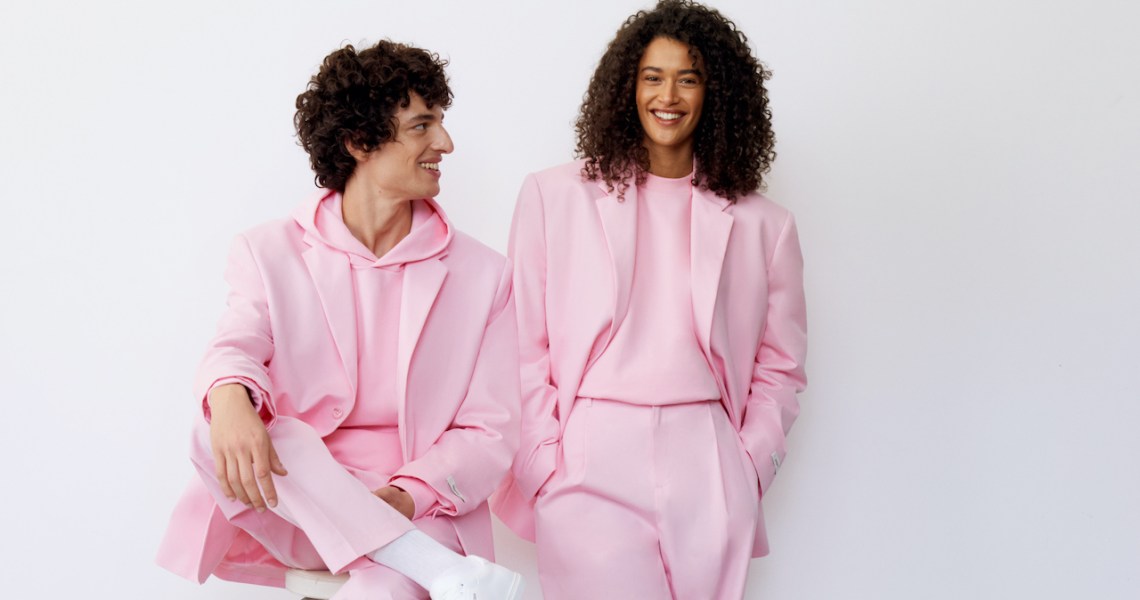At a time when every brand calls themselves sustainable, no matter how thin their credentials may be, it’s becoming more important for brands to actually back up their claims to be a better choice for the environment.
Increasingly, backing up those claims is coming in the form of some sort of impact or sustainability report. Brands like Pangaia, Allbirds, and Patagonia have made regular reports featuring hard data about how the brand has improved their environmental credentials a regular part of their marketing strategies. And even as consumers are spending less, more than 70% of companies are increasing sustainability spending this year.
The French luxury resale platform Vestiaire Collective is one of the latest, with an impact report published on June 20 that compares the impact of buying secondhand to buying new products. Vestiaire Collective and other resellers often tout the fact that buying a used good has less of a carbon impact than buying new, but the report puts numbers to those claims. According to the company’s calculations, buying a secondhand good has a 90% lower impact than buying the same thing new.
This report is Vestiaire Collective’s second annual report and dives into not just the general impact of resale as an industry but specific data of the platform’s own operations. For example, the report says that Vestiaire Collective’s packaging is 98% recyclable, with 63% of the packaging being made from recycled and organic materials.
For these reports to work, it’s important that they be clear not just on the impacts stated but also on their methodology. Vestiaire Collective, for example, dedicates the final eight pages of its 53-page report to an in-depth look at how it came to its various conclusions. Everything from how the company calculated living wages in different parts of the world to how it assigns a universal value to disparate factors like water usage and CO2 emissions got a detailed explanation.
Creating the report required significant investment and help from outside contributors. Vestiaire Collective worked with several outside organizations to compile the report. That included including Boston Consulting Group, which gathered data; its investor Kering, which offered a system assigning a monetary value to environmental impact; and the consulting firm PricewaterhouseCooper U.K.’s sustainability team, which structured the report. Vestiaire Collective emailed survey questions to 76,000 customers, commissioned an outside company called Cooperative Mu to audit its sustainability efforts, and created an internal tool called Culture Amp to survey employees and gauge happiness within the company.
“As resale grows, we lead the way by introducing socio-economic impact measurement,” said Fanny Moizant, Vestiaire Collective’s co-founder. “We have developed this report not as a beauty contest but as a transparency exercise, going into all aspects of our business.”
Ad position: web_incontent_pos1
The report gets marketed to all of Vestiaire Collective’s existing customers through channels like Instagram and email. At a time when customers are spending less across retail, the aim is to reassure existing customers that their purchases through Vestiaire Collective are not only affordable but also hav a positive impact.
The company had a lot of help putting the report together, but even smaller brands can do something similar. On an upcoming episode of the Glossy Podcast, Elisabeth de Gramont, chief brand officer of Canadian apparel brand Frank and Oak, described her process of putting together a 17-page report on the brand’s sustainability efforts earlier this month. She mostly worked by herself, with assistance from people on three different teams within the company.
“I led the project, but there were crucial inputs from the sourcing team because a lot of it had to do with our supply chain,” de Gramont said. “The sourcing team is crucial in keeping tabs on all those suppliers and understanding what they’re doing and that they keep their certifications up. Then our operations team had input on how many packages we’re sending out, how many are delivered by electric vehicles and in which areas we’re seeing the most impact. Then finally, the marketing team had input on the report itself — making sure that it looked good and communicated the data clearly, and that everything was on brand.”
Both Vestiaire Collective and Frank and Oak are B Corps, a certification that requires an intense amount of documentation and qualification of existing business practices and carbon impact.
In addition to annual reports, Allbirds has taken to adding a quantifiable carbon footprint number to all of its products. Meanwhile, Pangaia’s annual reports have become a staple of the brand’s marketing as a company that’s always on the bleeding edge of sustainable materials science.
Ad position: web_incontent_pos2
“We have focused on prioritizing data, including but not limited to the lifecycle assessments that we do on the vast majority of our products — 83% of them in 2021. And we make the findings publicly available on our website,” Maria Srivatsava, Pangaia’s chief impact officer, told Glossy in January.




